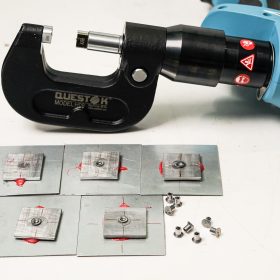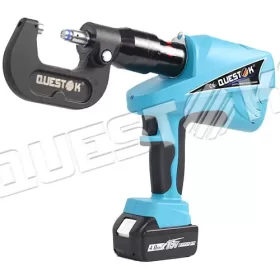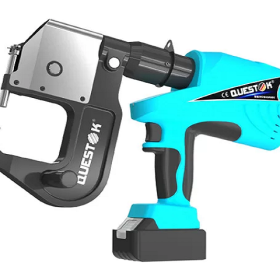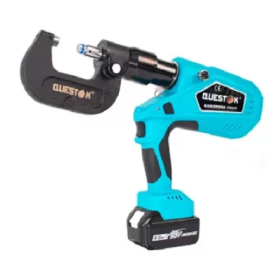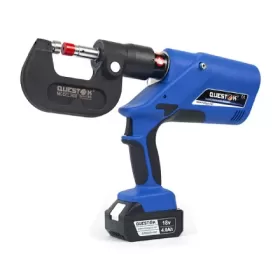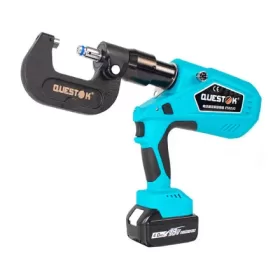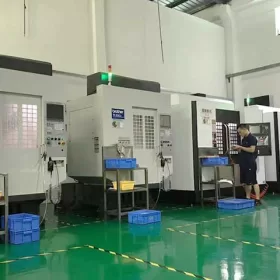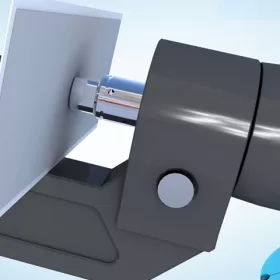Sheet Metal Joining Tools- A Comprehensive Buying Guide
In the realm of metalworking, precision and efficiency are paramount. When it comes to joining sheet metal, a comprehensive understanding of the tools available is crucial to achieve optimal results. This guide offers a deep dive into the world of sheet metal joining tools, empowering you to make informed decisions and elevate your projects to the next level.
Types of Sheet Metal Joining Tools
Brazing and Soldering:
These methods use a third metal or solder with a lower melting point than the base metals to create a strong joint. Brazing typically involves higher temperatures than soldering, resulting in stronger bonds.
Welding:
Welding processes involve melting the base metals together, creating a permanent bond. Arc welding, MIG welding, TIG welding, and spot welding are common techniques employed in sheet metal joining.
Mechanical Joining:
This involves connecting sheet metal pieces using mechanical fasteners, such as rivets, bolts, and screws. These methods offer flexibility and are relatively easy to implement.
Factors to Consider When Choosing Sheet Metal Joining Tools
Material Thickness:
The thickness of the sheet metal determines the most suitable joining method. Thinner sheets may require soldering or brazing, while thicker sheets may necessitate welding or mechanical fasteners.
Joint Strength and Durability:
The strength and durability requirements of the joint will dictate the type of joining tool required. Welding provides the strongest bonds, while brazing and mechanical joining offer varying degrees of strength.
Production Volume and Speed:
High-volume applications typically require automated joining processes, such as spot welding or riveting. Conversely, low-volume or custom projects may favor manual methods like soldering or brazing.
Cost and Availability:
Budget and equipment availability play a significant role in tool selection. Welding equipment can be expensive and requires specialized training, while mechanical joining tools are generally more affordable and accessible.
Tips for Using Sheet Metal Joining Tools
Proper Preparation:
Clean the sheet metal surfaces to ensure a strong bond. Remove any rust, dirt, or contaminants that could interfere with the joining process.
Safety First:
Always wear appropriate safety gear, including gloves, eye protection, and respirators when using joining tools. Protect yourself from fumes, sparks, and hot surfaces.
Test and Adjust:
Before committing to large-scale production, conduct test welds or joints to fine-tune your technique and ensure optimal results. Adjust settings as needed for material thickness, joint type, and application requirements.
Regular Maintenance:
Proper maintenance is essential for the longevity and performance of sheet metal joining tools. Regularly clean and inspect equipment, and perform necessary repairs or replacements to prevent breakdowns and ensure smooth operation.
Conclusion
Sheet metal joining tools offer a wide range of options to effectively and efficiently connect sheet metal components. By understanding the different types of tools available, considering the factors that influence their selection, and adhering to proper usage and maintenance principles, you can unlock the potential of these tools and achieve precision and durability in your metalworking projects.
- Company News
- Industry News
- Tag
- Tags
-
The Advantages of Questok Rivet Guns: Precision, Efficiency, and Durability
In industrial fastening applications, the choice of tools directly impacts productivity, safety, and long-term cost-effectiveness. Questok rivet guns have emerged as a standout solution for professionals across aerospace, automotive, and construction sectors. Combining advanced engineering with user-centric design, these tools deliver unmatched performance. Below are the key advantages that make Questok rivet guns a preferred choice:
-
Rivet Gun FAQ
Rivet Gun FAQ-SPR
-
Fast Assembly and Repair With Cordless Solid Rivet Gun
Questok cordless solid rivet gun stands out as a pivotal innovation, merging portability with power to facilitate efficient and effective fastening in a myriad of applications.
-
Redifine The Role of Self-piercing Riveting Gun Machine
Self-piercing riveting adopts high-speed mechanical fastening skill that joins thin sheet materials, typically steel and aluminum alloys.
-
The Latest Innovations in Clinching Tool Design
Explore the latest innovations in clinching tool design, redefining precision, efficiency, and versatility in material joining.
-
The Application and Maintenance of Self-Piercing Rivet Guns
Delve into the applications of self-piercing rivet guns in the automotive and aerospace industries and reveal the essential maintenance practices that ensure their accuracy and efficiency.
-
Rivetless Riveting Gun for Ventilation Duct Projects
The ventilation duct rivetless gun is a tool for riveting ventilation ducts without rivets.
-
Guide to Using Self-Piercing SPR Riveting Gun
In the automotive industry, self-piercing SPR (Self-Piercing Rivet) riveting guns are commonly used for joining metal components in vehicle bodies, including BMW vehicles.
-
Rivet Gun FAQ
Rivet Gun FAQ-SPR
-
Versatile Fastening- Applications of the Handheld Rivet Gun Across Industries
In the realm of fastening, the handheld rivet gun stands as a testament to ingenuity and versatility. Its ability to effortlessly join materials with sheer strength and permanence has revolutionized manufacturing and construction processes, leaving an enduring mark on diverse industries. Aerospace: Where precision and reliability are paramount, the rivet gun shines. In aircraft assembly, […]
-
Time-Saving Tools- Speeding Up Projects with Electric Blind Rivet Guns
In the whirlwind of project deadlines, every minute counts. But what if there was a tool that could dramatically reduce assembly time, giving you an edge in the race against the clock? Enter the electric blind rivet gun: your secret weapon for lightning-fast and effortless riveting. Electric blind rivet guns are the ultimate time-savers for […]
-
Streamlining Fastening- How an Electric Blind Rivet Gun Enhances Efficiency
Introduction In the realm of manufacturing and assembly, fastening plays a crucial role in securing components and ensuring structural integrity. Traditional manual rivet guns, while reliable, are often time-consuming and labor-intensive. The advent of electric blind rivet guns has revolutionized the fastening process, significantly enhancing efficiency and productivity. This article delves into the benefits of […]
-
Top Trends in Electric Rivetless Clinching Guns
In the realm of fastening technology, electric rivetless clinching guns have emerged as a revolutionary solution for a wide range of industrial applications. These advanced tools offer several преимущества and capabilities, revolutionizing the way businesses approach their fastening needs. Adoption of Brushless Motors Brushless motors have gained significant traction in electric rivetless clinching guns due […]
-
Top Features and Benefits of Universal Self-Piercing Riveting Guns
In the realm of metalworking, precision and efficiency are paramount. Universal self-piercing riveting guns, often referred to as self-pierce riveting guns, embody these qualities, offering remarkable benefits for various applications. These innovative tools feature technologically advanced functions that enhance productivity, reliability, and overall performance, making them indispensable in industries such as aerospace, automotive, construction, and […]
-
The Role of Automation in Electric Rivetless Clinching
Electric rivetless clinching (ERC) is a lightweight joining process that eliminates the need for rivets or other fasteners. This can lead to significant cost savings and increased production efficiency. Automation plays a critical role in ERC, enabling high-speed and high-volume production. Automated Feed Systems Automated feed systems are used to accurately position the two workpieces […]
-
Why Choose a Universal Self-Piercing Riveting Gun for Your Projects?
In the realm of construction and fabrication, riveting guns stand as indispensable tools for creating secure and robust connections. Among the various types available, universal self-piercing riveting (SPR) guns have emerged as a game-changer due to their versatility and efficiency. This article will delve into the compelling reasons why choosing a universal self-piercing riveting gun […]
